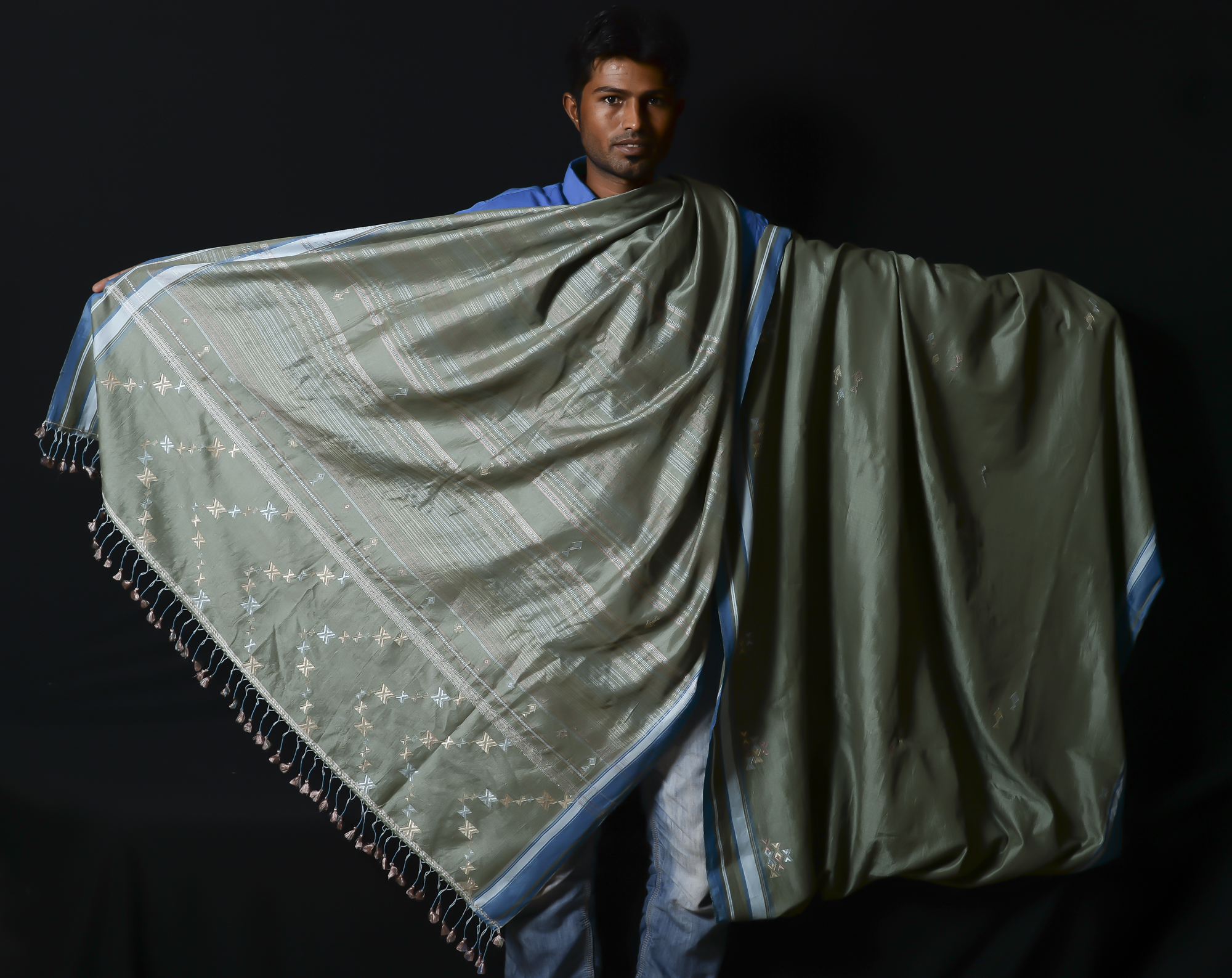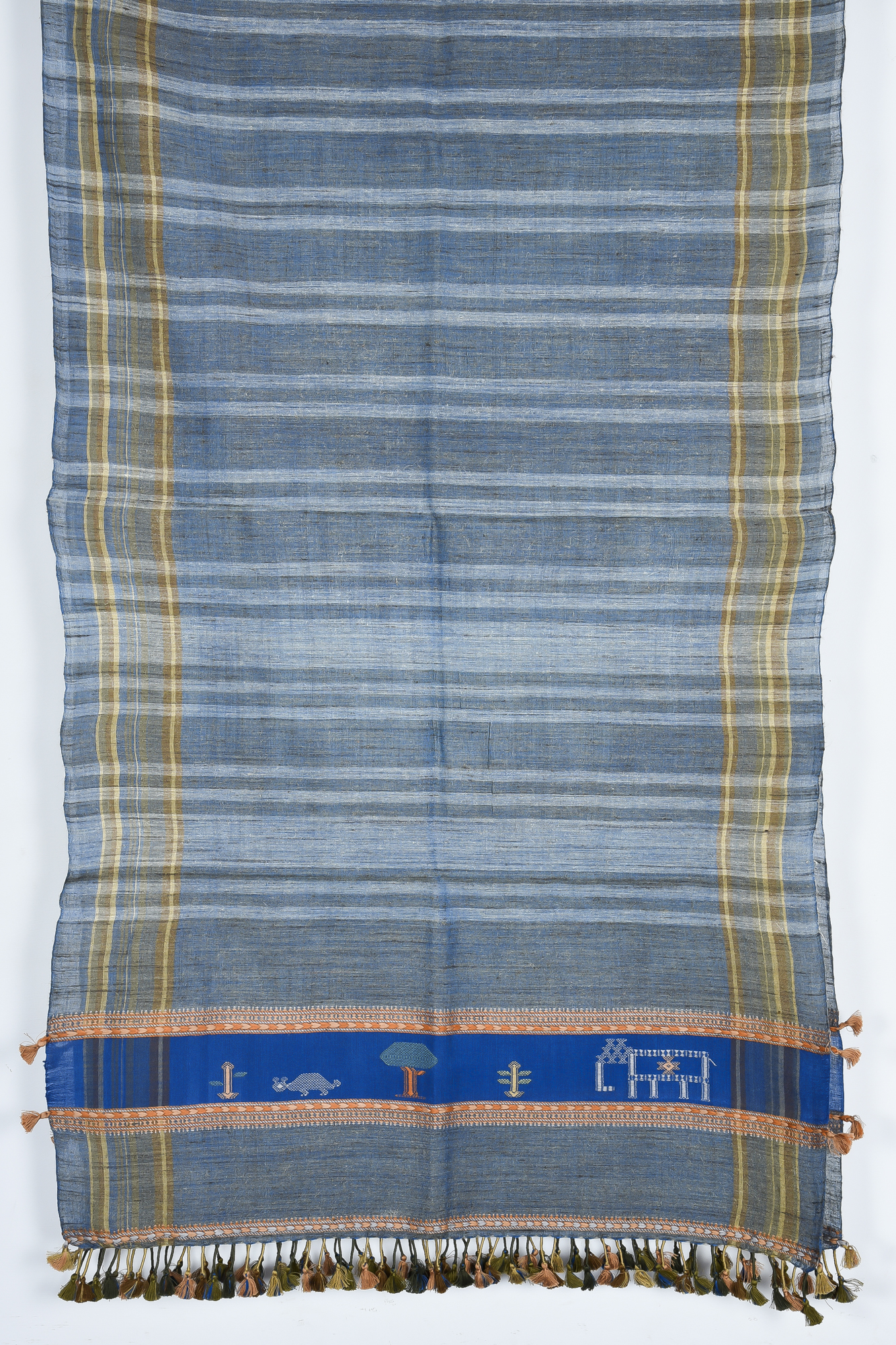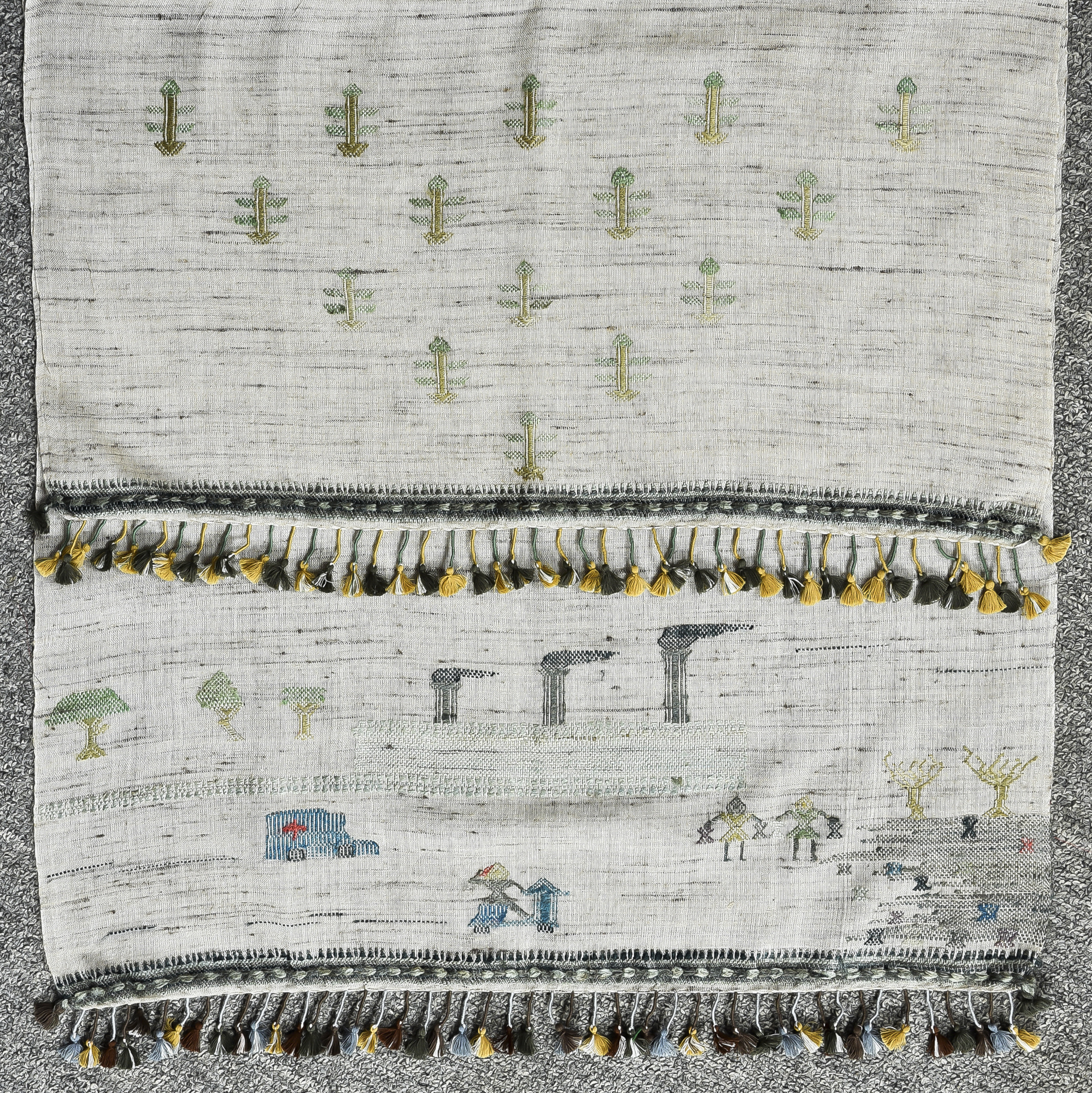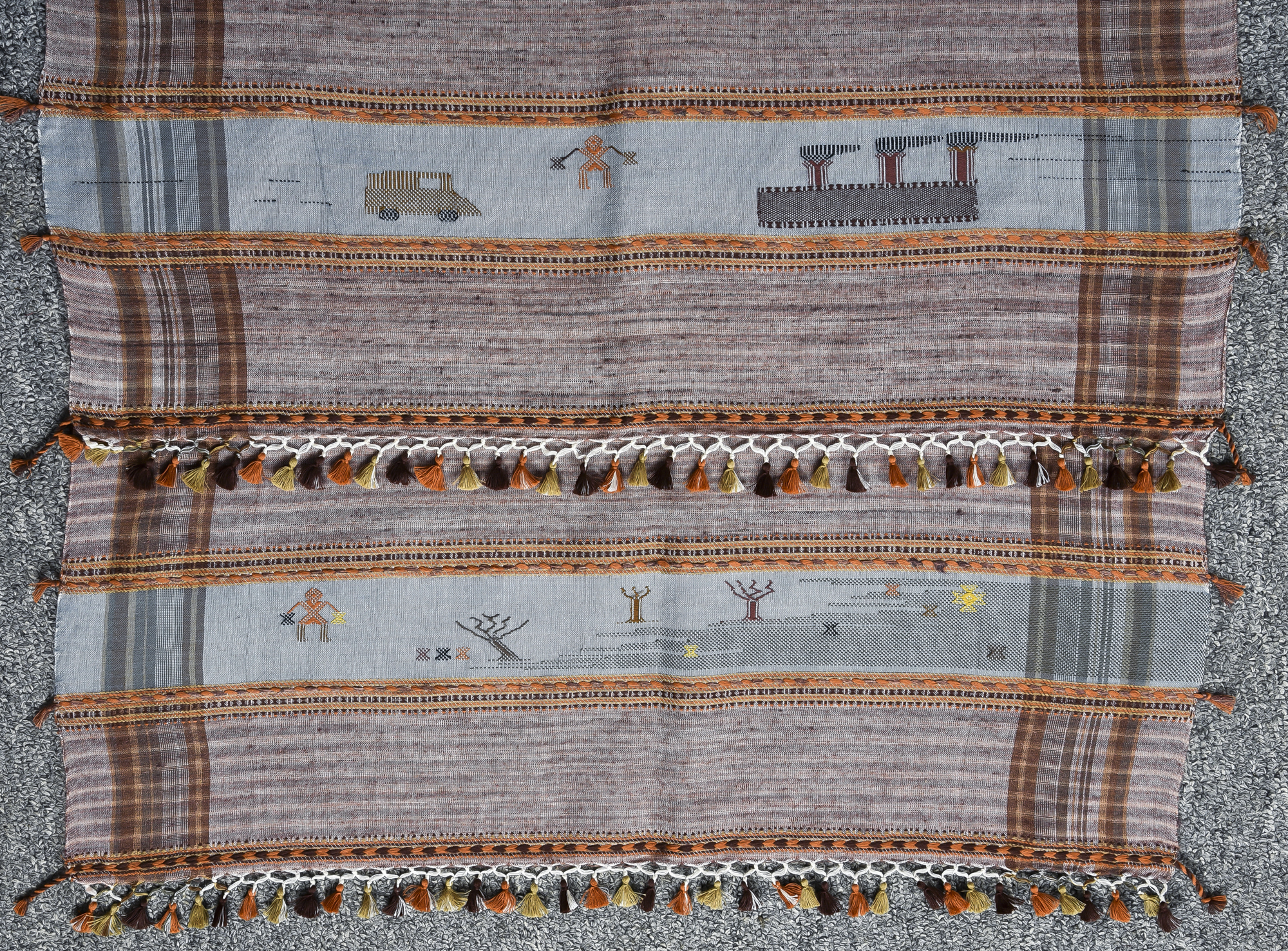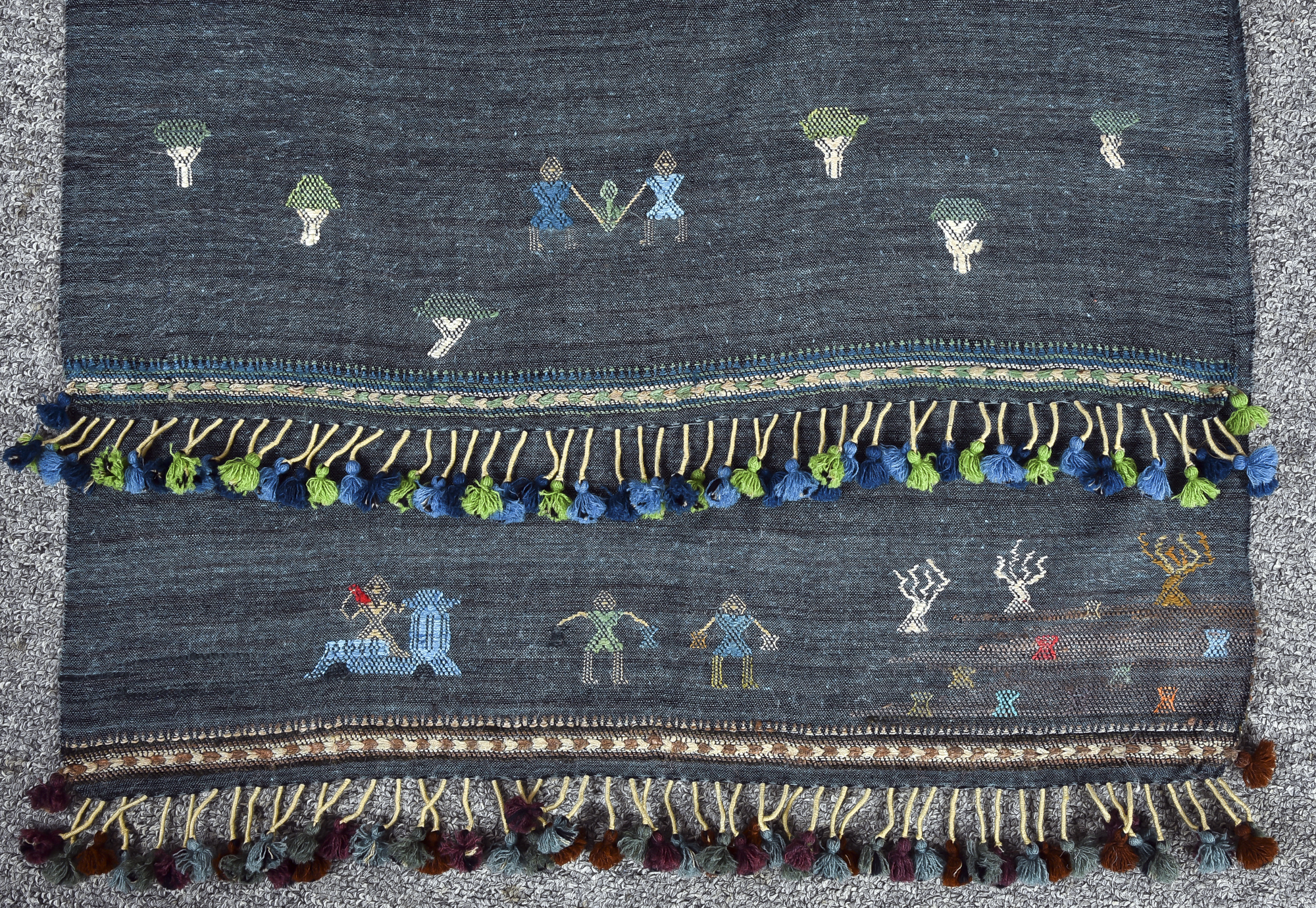Artist:
Pachan Premjibhai Siju
Region:
Country:
Media/General:
About:
For centuries the weavers of Kutch, the nomadic Rabaris, and the settled Ahirs worked together as a sustainable network of weavers, dyers, and clients. Each ethnic community had a unique range of fabrics, with different patterns and colours reflecting age, marital status and occasion. Today most traditional weaving products, such as dhabla blankets and women’s veils are used mainly by elders. More contemporary shawls, developed in the 1960s, were quickly adopted as mainstream wear but traditional weavers were stripped of their livelihoods with the advent of industrially-produced fabrics.
Artist Pachan Premjibhai Siju has reimagined these contemporary shawls and works with his family to weave them according to tradition. He begins with natural fibers including cotton, wool (both Merino and local), bamboo, and Tassar and Eri silk. Premjibhai Siju then dyes the yarns, their colors inspired by the colors and textures of clouds and earth. His mother prepares the warp while his wife and brothers’ wives wind the bobbins for weaving, as well as perform the finishing tassels. Along with his two brothers, Pachan does the weaving on a four-pedal pit loom with a fly shuttle, inserting extra weave patterns by hand. “These are the places I innovated on our traditional extra weave motifs to tell my stories, which I think about as I weave,” he explains.
Pachan’s stories are about the impact of climate change on the world as a whole, but also on his tradition of weaving. “I have been thinking about climate change…I wanted clients to also think about it. Our original products were sustainable, but today commercial work is often not. I wanted to create work that is contemporary and sustainable,” he says.

